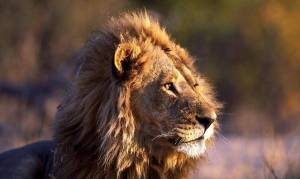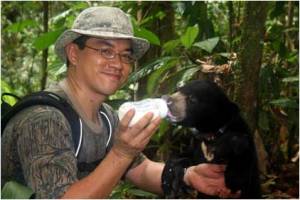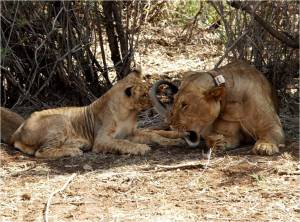The Mbeli Bai is a large, swampy forest clearing located deep in the Republic of Congo’s Nouabalé-Ndoki National Park – where gorillas routinely engage in age-old rituals safe from the dangers of the modern world. This primitive setting presents the perfect opportunity for researchers to observe these great apes in subtle ways that do not disrupt their normal behavior patterns. Over a period of 12 years, conservationists with the Wildlife Conservation Society followed the lives of 19 adult male western lowland gorillas and their family groups in order to gain greater insight into in the mating habits of these magnificent animals. 
Carefully positioned on observation platforms with telescopes and cameras, researchers were able to track the number of females each male mated with, and the number of offspring produced by each adult male and their survival. Their findings indicate that in gorilla mating circles – size does indeed matter. Consistently, the bigger the adult male, the more mates it had. “Our findings of correlations between physical traits and male reproductive success could be considered evidence of a selection process in gorillas, but it is not yet proof,” said Thomas Breuer, the lead author of the study.
In order to assess the role of size in the reproductive success of the gorillas, researchers selected three physical factors for measurement: overall body length, the size of the adult male’s head crest, and the size of an individual’s gluteal muscles on the animal’s posterior. The researchers then compared this data with information on group dynamics to discover that all three characteristics were positively correlated to an adult male’s average number of mates.
Interestingly, the data on gorilla size was not gained by using tape measures, but rather a non-invasive method called digital photogrammetry, which renders accurate measurements of individual gorillas and their characteristics from digital images by converting pixel size to actual lengths.
The SeaWorld & Busch Gardens Conservation Fund is a supporter of the Wildlife Conservation Society’s efforts in the Mbeli Bai and is pleased to help illuminate the selective pressures that influence the evolution of great apes.



![draft_lens1821443module8493798photo_smallSchoolofFish[1]](https://buschblogger.files.wordpress.com/2012/05/draft_lens1821443module8493798photo_smallschooloffish1.jpg?w=300&h=225)






